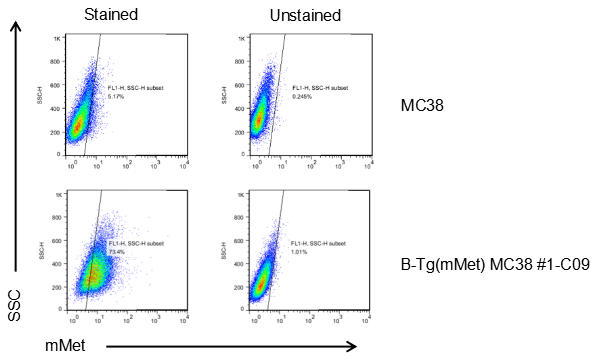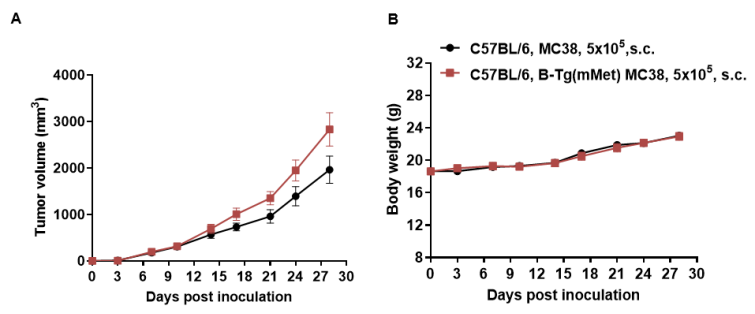B-Tg(mMet) MC38
|
Common name |
B-Tg(mMet) MC38 | Catalog number |
321875 |
| Aliases |
HGF; HGFR; Par4; c-Met; AI838057 |
Disease | Colon carcinoma |
|
Organism |
Mouse |
Strain | C57BL/6 |
| Tissue types | Colon | Tissue | Colon |

Met expression analysis in B-Tg(mMet) MC38 cells by flow cytometry. Single cell suspensions from wild-type MC38 and B-Tg(mMet) MC38 cultures were stained with species-specific anti-Met antibody. Mouse Met was detected on the surface of B-Tg(mMet) MC38 cells but not wild-type MC38 cells. The 1-C09 clone of B-Tg(mMet) MC38 cells was used for in vivo experiments.

Subcutaneous homograft tumor growth of B-Tg(mMet) MC38 cells. B-Tg(mMet) MC38 cells (5x105) and wild-type MC38 cells (5x105) were subcutaneously implanted into C57BL/6 mice (female, n=6). Tumor volume and body weight were measured twice a week. (A) Average tumor volume ± SEM. (B) Body weight (Mean± SEM). Volume was expressed in mm3 using the formula: V=0.5 X long diameter X short diameter2. As shown in panel A, B-Tg(mMet) MC38 cells were able to establish tumors in vivo and can be used for efficacy studies.












 京公网安备:
京公网安备: